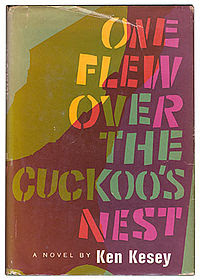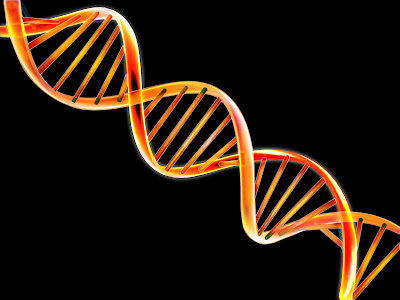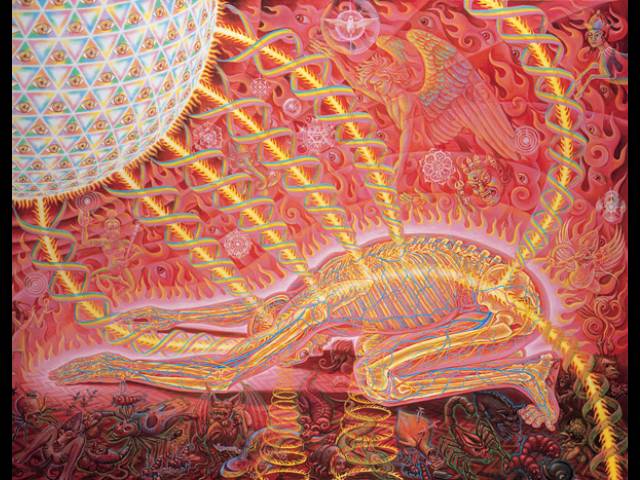
It has long been suggested that psychedelic drugs act as an aid for creativity. The link between psychedelics and creativity is based, largely, on anecdotes and the plethora of creative works inspired by these substances. However, scientific research does help to bolster this connection, too.
With the flourishing of LSD use in the 1960s, the drug was used by leading poets, artists, and authors who would subsequently praise the drug for boosting their creative powers. As a case in point, take Allen Ginsberg, the renowned beat poet, most known for his portrayal of the beat era in his epic poem Howl.
Some of his other poems such as Lysergic Acid are obviously influenced by the psychedelic experience. In poems like this we can find new and striking kinds of imagery being used – the poem Lysergic Acid, for example, begins with the line, “It is a multiple million eyed monster”. Ken Kesey, who was involved in the CIA-controlled LSD experiments in the 60s, used his own experiences, as well as those of other subjects, to paint the characters in his seminal novel One Flew Over the Cuckoo’s Nest.
Some scientists have claimed that the use of psychedelics allowed them to look at scientific puzzles from a completely different angle, eventually allowing them how to solve the puzzle. Nobel-prize-winning chemist Kary Mullis, for example, explicitly stated that LSD helped him to develop the polymerase chain reaction (PCR) that allows you to replicate DNA sequences in a lab. How the drug gave him such an insight is uncertain – perhaps it was through a visual aspect of the trip or even a sudden flash of realisation. But whatever the cause, Mullis claimed it was undeniable that LSD was an aid in his Nobel-prize-winning discovery.
It has also been rumoured that Francis Crick (the co-discoverer of the structure of the DNA molecule) was under the influence of LSD when he figured out the double-helix structure of this blueprint for life. It is not so hard to imagine that this is the case, however. As Jeremy Narby notes in his fascinating book The Cosmic Serpent, it is in fact very common for people under the influence of hallucinogenic drugs to perceive images of double-helixes, twisted vines, serpents, staircases, or ladders. Narby goes on to say that it is an almost universal fact that indigenous tribes interpret this double-helix shape as the provider of life. So perhaps Francis Crick, under the influence of LSD, came to the same realisation as these indigenous tribes but reiterated it in a more solid, scientific context.
One of the most interesting ways in which psychedelic drugs can aid creativity is in the context of art. Undoubtedly, artists have used visions, spiritual experiences, and religious ideas to influence their paintings. For example, the 16th-century Dutch painter Hieronymous Bosch used surreal, fantastic imagery in his paintings in order to encapsulate a certain religious notion. In arguably his most famous work, The Garden of Earthly Delights, the middle panel contains images that verge on the psychedelic.
And of course, there are clear examples of art that is heavily influenced by psychedelic experiences, which once again points to the creative power of psychedelic drugs. The artwork of the Peruvian shaman Pablo Amaringo is an excellent example of this. Many people have confirmed his ability to capture some essential features of the ayahuasca experience – in his paintings, you will notice cosmic snakes, double helixes, strange worlds, palaces, goddesses, helper beings, fantastic neon colours, and the energy and light of a living jungle. For more on how ayahuasca influenced Amaringo’s work, it is worth reading The Ayahuasca Visions of Pablo Amaringo.
Perhaps my favourite artist, and subsequently the most prolific translator of the psychedelic experience, is Alex Grey. His artwork is heavily influenced by LSD and DMT. Based on his paintings, it is clear that psychedelic drugs can offer artists a glimpse of a ‘spiritual’ or ‘extra-dimensional’ world, and therefore a new source of inspiration. Alex Grey makes it clear that his artwork is co-dependent with his psychedelic experiences in books such as The Mission of Art and Transfigurations.
For more on how psychedelics can enhance creativity, you can read about the effects of psychedelics on problem-solving here. Psychedelics appear to enhance divergent thinking, an open-ended form of thinking in which an idea is followed in several directions. When you think divergently, you consider many possible solutions, make new connections between concepts, and generally ‘think outside the box’.
While research on the creativity-boosting properties of psychedelics is lacking, many studies have looked at this relationship. And they find that participants show improvements in creativity following the use of psychedelics. It seems that during the psychedelic experience, the significance of creative challenges and insights are magnified. This can give users the motivation to explore new and less obvious ways of thinking they may usually ignore – and to pursue these ideas intently and fully. Ido Hartogsohn, a researcher at Harvard University who has a deep interest in psychedelics, notes:
By imbuing possible solutions with a magnified sense of meaning and plausibility, psychedelics might assist in reducing inhibitions, self-criticism, and kindle greater concentration and enthusiasm for creative exploration.
While more robust research is needed on the connection between psychedelics and creativity is needed, these substances are still touted as playing key roles in the lives of creatively minded people. Steve Jobs, the founder of Apple, championed the LSD experience, describing it as one of the most important experiences in his life. And you don’t have to look far to find examples of art and music that are influenced by the psychedelic experience.
Brain scans indicate how psychedelics allow people to enter novel exploratory spaces. Under the influence of LSD, the brain is like an infant, “free and unconstrained”, according to Imperial College London researcher Robin Carhart-Harris. Another study found that taking psilocybin (the active ingredient in magic mushrooms) can make your brain ‘hyperconnected’. In this experiment, researchers discovered that psilocybin allows brain regions that are normally unconnected to start communicating with each other.





